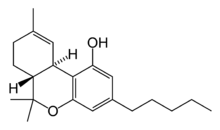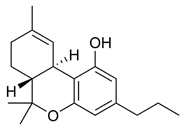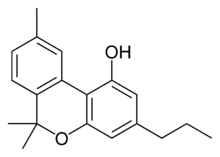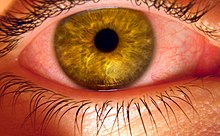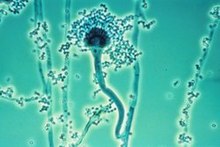Supporters of prison abolition also work to end solitary confinement, the death penalty, and the construction of new prisons. Others support book to prisoner projects and defend the rights of prisoners to have access to information and library services. Some organizations such as the Anarchist Black Cross seek total abolishment of the prison system, without any intention to replace it with other government-controlled systems. Many anarchist organizations believe that the best form of justice arises naturally out of social contracts or restorative justice.
Advocates of prison abolition
Prominent social activist Angela Davis, outspoken critic of the prison-industrial complex (PIC), openly supports prison abolition.
In her work, she writes: "Mass incarceration is not a solution to
unemployment, nor is it a solution to the vast array of social problems
that are hidden away in a rapidly growing network of prisons and jails.
However, the great majority of people have been tricked into believing
in the efficacy of imprisonment, even though the historical record
clearly demonstrates that prisons do not work."
Angela Davis and Ruth Wilson Gilmore co-founded Critical Resistance,
which is an organization working to "build an international movement to
end the Prison Industrial Complex by challenging the belief that caging
and controlling people makes us safe."
Other similarly motivated groups such as the Prison Activist Resource
Center (PARC), a group "committed to exposing and challenging all forms
of institutionalized racism, sexism, able-ism, heterosexism, and
classism, specifically within the Prison Industrial Complex," and Black & Pink, an abolitionist organization that focuses around LGBTQ rights, all broadly advocate for prison abolition. Furthermore, the Human Rights Coalition, a 2001 group that aims to abolish prisons, and the California Coalition for Women Prisoners, a grassroots organization dedicated to dismantling the PIC, can all be added to the long list of organizations that desire a different form of justice system.
Since 1983,
the International Conference on Penal Abolition (ICOPA) gathers
activists, academics, journalists, and "others from across the world who
are working towards the abolition of imprisonment, the penal system,
carceral controls and the prison industrial complex (PIC),"
to discuss three important questions surrounding the reality of prison
abolition ICOPA was one of the first penal abolitionist conference
movements, similar to Critical Resistance in America, but "with an
explicitly international scope and agenda-setting ambition."
Anarchists wish to eliminate all forms of state control, of which imprisonment
is seen as one of the more obvious examples. Anarchists also oppose
prisons given that statistics show incarceration rates affect mainly
poor people and ethnic minorities, and do not generally rehabilitate criminals, in many cases making them worse. As a result, the prison abolition movement often is associated with humanistic socialism, anarchism and anti-authoritarianism.
In October 2015, members at a plenary session of the National Lawyers Guild (NLG) released and adopted a resolution in favor of prison abolition.
Proposed reforms and alternatives
Proposals
for prison reform and alternatives to prisons differ significantly
depending on the political beliefs behind them. Proposals and tactics
often include:
- Penal system reforms:
- Substituting, for incarceration, supervised release, probation, restitution to victims, and/or community work.
- Decreasing terms of imprisonment by abolishing mandatory minimum sentencing
- Decreasing ethnic disparity in prison populations
- Prison condition reforms
- Crime prevention rather than punishment
- Abolition of specific programs which increase prison population, such as the prohibition of drugs (e.g., the American War on Drugs), gun control, prohibition of sex work, and alcohol restrictions.
- Education programs to inform people who have never been in prison about the problems
- Fighting individual cases of wrongful conviction
The United Nations Office on Drugs and Crime published a series of handbooks on criminal justice. Among them is Alternatives to Imprisonment
which identifies how the overuse of imprisonment impacts fundamental
human rights, especially those convicted for lesser crimes.
Social justice and advocacy organizations such as Students Against Mass Incarceration (SAMI) at the University of California, San Diego
often look to Scandinavian countries Sweden and Norway for guidance in
regards to successful prison reform because both countries have an
emphasis on rehabilitation rather than punishment.
According to Sweden's Prison and Probation Service Director-General,
Nils Öberg, this emphasis is made popular among the Swedish because the
act of imprisonment is considered punishment enough.
This focus on rehabilitation includes an emphasis on promoting normalcy
for inmates, a charge lead by experienced criminologists and
psychologists.
In Norway a focus on preparation for societal re-entry has yielded "one
of the lowest recidivism rates in the world at 20%, [while] the US has
one of the highest: 76.6% of [Americans] prisoners are re-arrested
within five years".
The Scandinavian method of incarceration seems to be successful: the
Swedish incarceration rate decreased by 6% between 2011 and 2012.
Abolitionist views
Many
prison reform organizations and abolitionists in the United States
advocate community accountability practices, such as
community-controlled courts, councils, or assemblies as an alternative
to the criminal justice system.
Organizations such as INCITE!
and Sista II Sista that support women of color who are survivors of
interpersonal violence argue that the criminal justice system does not
protect marginalized people who are victims in violent relationships.
Instead, victims, especially those who are poor, minorities, transgender
or gender non-conforming can experience additional violence at the
hands of the state.
Instead of relying on the criminal justice system, these organizations
work to implement community accountability practices, which often
involve collectively-run processes of intervention initiated by a
survivor of violence to try to hold the person who committed violence
accountable by working to meet a set of demands.
For organizations outside the United States see, e.g. Justice Action, Australia.
Some anarchists and socialists contend that a large part of the
problem is the way the judicial system deals with prisoners, people, and
capital. According to Marxists, in capitalist economies incentives are
in place to expand the prison system and increase the prison
population. This is evidenced by the creation of private prisons in
America and corporations like CoreCivic, formerly known as Correction
Corporation of America (CCA). http://www.cca.com/
Its shareholders benefit from the expansion of prisons and tougher laws
on crime. More prisoners is seen as beneficial for business. Some
anarchists contend that with the destruction of capitalism, and the
development of social structures that would allow for the
self-management of communities, property crimes would largely vanish.
There would be fewer prisoners, they assert, if society treated people
more fairly, regardless of gender, color, ethnic background, sexual
orientation, education, etc.
Mental illness and prison
Prison
abolitionists such as Amanda Pustilnik take issue with the fact that
prisons are used as a "default asylum" for many individuals with mental
illness.
"Why do governmental units choose to spend billions of dollars a year to concentrate people with serious illnesses in a system designed to punish intentional lawbreaking, when doing so matches neither the putative purposes of that system nor most effectively addresses the issues posed by that population?"
To rephrase, if the whole point of the penal system is
to rehabilitate and reform individuals who have willingly transgressed,
then those transgress the law who for reasons outside there cognitive
control transgress don't belong in prison since prisoners were never
designed nor intended to rehabilitate this population.
In the United States, there are more people with mental illness in prisons than in psychiatric hospitals.
This statistic is one of the major pieces of evidence that prison
abolitionists claim highlights the depravity of the penal system.
Prison abolitionists contend that prisons violate the
Constitutional rights (5th and 6th Amendment rights) of mentally ill
prisoners on the grounds that these individuals will not be receiving
the same potential for rehabilitation as the non-mentally ill prison
population. This injustice is sufficient grounds to argue for the
abolishment of prisons.
Prisons were not designed to be used to house the mentally ill, and
prison practices like solitary confinement are awful for mmental health.
Additionally, individuals with mental illnesses have a much higher
chance of committing suicide while in prison.
1973 Walpole Prison Uprising
In 1973, two years after the Attica Prison uprising, the inmates of Walpole prison formed a prisoners' union
to protect themselves from guards, end behavioral modification
programs, advocate for the prisoner's right for education and
healthcare, gain more visitation rights, work assignments, and to be
able to send money to their families.
The union also created a general truce within the prison and race-related violence sharply declined. During the Kwanzaa
celebration, black prisoners were placed under lockdown, angering the
whole facility and leading to a general strike. Prisoners refused to
work or leave their cells for three months, leading to the guards
beating prisoners, putting prisoners in solitary confinement, denying
prisoners medical care and food.
The strike ended in the prisoners' favour as the superintendent
of the prison resigned. The prisoners were granted more visitation
rights and work programs. Angered by this, the prison guards went on
strike and abandoned the prison, hoping that this would create chaos and
violence throughout the prison. But the prisoners were able to create
an anarchist community where recidivism
dropped dramatically and murders and rapes fell to zero. Prisoners
volunteered to cook meals. Vietnam veterans who'd been trained as medics
took charge of the pharmacy and distribution of meds. Decisions were
made in community assemblies.
Guards retook the prison after two months, leading to many prison
administrators and bureaucrats quitting their jobs and embracing the
prison abolition movement.
Arguments made for prison abolition
- Lack of proper legal representation
- "Eighty percent of people accused of crimes [in the United States] are unable to afford a lawyer to defend them." The US Supreme Court held in 1963 that a poor person facing felony charges "cannot be assured a fair trial unless counsel is provided for him."
- "Long Term Neglect and underfunding of indigent defense have created a crisis of extra ordinary proportions in many states throughout the country."
- War on drugs conceals racial tension
- (2005) "The United States leads the world in the number of people incarcerated in federal and state correctional facilities. There are currently more than 2 million people in American prisons or jails. Approximately one-quarter of those people held in U.S. prisons or jails have been convicted of a drug offense. The United States incarcerates more people for drug offenses than any other country. With an estimated 6.8 million Americans struggling with drug abuse or dependence, the growth of the prison population continues to be driven largely by incarceration for drug offenses."
- "The so-called drug war was started in the 1980s and it was aimed directly at the black population. None of this has anything to do with drugs. It has to do with controlling and criminalizing dangerous populations."
- "Blacks are 12.3 percent of the U.S. population (2001) but they comprise fully half of the roughly 2 million Americans currently behind Bars. On any given day, 30 percent of African-American males aged 20–29 are "under correctional supervision".
- Blacks constitute 13 percent of all drug users, but 35 percent of those arrested for drug possession, 55 percent of persons convicted, and 74 percent of people sent to prison.
- Incarceration is socially and economically crippling to the convicted and the community.
- "Each Prisoner represents an economic asset that has been removed from that community and placed elsewhere. As an economic being, the person would spend money at or near his or her area of residence—typically, an inner city. Imprisonment displaces that economic activity: Instead of buying snacks in a local deli, the prisoner makes those purchases in a prison commissary. The removal may represent a loss of economic value to the home community, but it is a boon to the prison [host] community. Each prisoner represents as much as $25,000 in income for the community in which the prison is located, not to mention the value of constructing the prison facility in the first place. This can be a massive transfer of value: a young male worth a few thousand dollars of support to children and local purchases is transformed into a $25,000 financial asset to a rural prison community. The economy of the rural community is artificially amplified, the local city economy is artificially deflated."
- Unfortunately, there are no definitive national statistics on the employment status of felons. But both anecdotal evidence and fragmentary data confirm what common sense would predict: individuals who have been incarcerated have great difficulty securing employment when they return to society. Except for a short period in the late 1990s, when the labor market was so tight that the Wall Street Journal reported on employer efforts to reach out to felons, those leaving prison have faced formidable obstacles to employment. Some of these difficulties are related to company policies or procedures and others are the result of employer perceptions of felons' job skills or trustworthiness. Felons are also barred from public employment in a number of states, including three with a high proportion of African American residents (Alabama, Mississippi, and South Carolina). Occupations that are licensed by states also have restrictions on allowing felons to work in them.
- It is argued by the Massachusetts Statewide Harm Reduction Coalition that the prison system is in violation of the Universal Declaration of Human Rights, which was adopted by the United Nations General Assembly in 1948, and which is prescribing life, liberty, equality and justice to all people without discrimination of any sort as an inalienable right. The Universal Declaration of Human Rights has also abolished all forms of slavery and genocide, including torture, repression and oppression that prisons thrive upon.
- Imprisonment is seen by some as a form of violent behavior which legitimizes violence and cruelty, producing a "boomerang effect of dehumanization" on the society which dehumanizes itself and limits its potential for a peaceful future by resorting to the use of such repressive and cruel institutions.
- Prisons may be less effective at discouraging crimes and/or compensating victims than other forms of punishment.
- Degree and quality of access to justice depends on the financial resources of the accused.
- Prisons alienate people from their communities.
- In the U.S., people of color and from the lower class are much more likely to be imprisoned than people of European descent or people who are wealthy.
- People who are put in prison for what are arguably crimes motivated by need, such as some minor theft (food, etc.) or prostitution, find it much harder to obtain legal employment once convicted of a crime. Arguably, this difficulty makes it more likely they will find themselves back in the prison system, having had few other options or resources available to support themselves and/or their families. Many prison abolitionists argue that we should "legalize survival" and provide help to those who need it instead of making it even harder to find work and perpetuating the non-violent crimes.
- Prisons are not proven to make people less violent. In fact, there is evidence that they may instead promote violence in individuals by surrounding them with other violent criminals, which can lead to predictable negative/violent results.
- Drug-related offenders are being ushered in and out of the prison system like a revolving door. Rather than educate, and rehabilitate the offender to a clean path of sobriety and increased stature, the state ignores them.
Arguments made against prison abolition
Opponents
of the abolition argue that none of the arguments above address the
protection of non-criminal population from the effects of crime, and
from particularly violent criminals.
- Individuals who have committed crimes, especially crimes violent in nature, must repay society. Retributive philosophy argues that punishment is necessary in order for an individual who has done wrong to pay for their crime
- Utilitarian ethics argues that the unhappiness of few is good or right if it leads to the happiness of the majority. The ethical argument in this case is that keeping 1% of the population incarcerated is worth it for the safety of the majority
- Deterrence theory makes the case that prison discourages citizens from committing a crime, because they would not want to end up in prison

